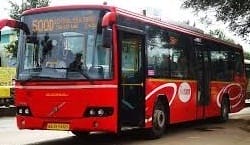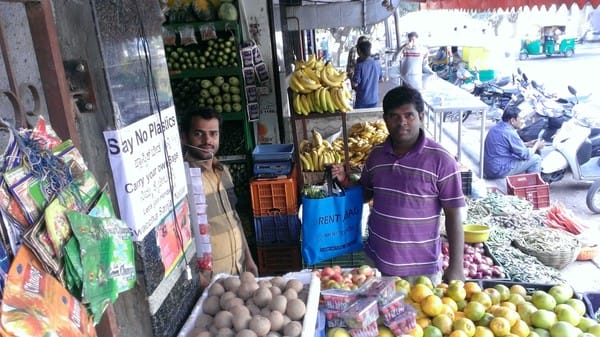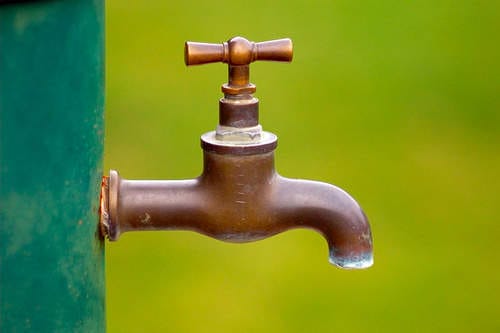World over, April 22nd is celebrated as Earth Day. The day, first celebrated in 1970, was a call to get the public talking about the environment in America. As the Earth Day website calls out, “It marks the anniversary of what many consider the birth of the modern environmental movement.” It is now celebrated in close to 200 countries, where it not only serves as a reminder for us to gauge how the environment is coping with change, but also what we as individuals and groups can do to ensure that the situation does not worsen.
Though Earth Day is celebrated once a year, is one day enough to be conscious of our impact on our planet? There are things each of us can do in all spheres of our lives to help nature chill out. By making small changes in the way we live our lives, we can reduce the negative impact that we have on the environment. Here are some ways in which you can reduce your carbon footprint.
On the road

-
If you don’t have to go very far, ditch your vehicle and walk or cycle.
-
Turn off your vehicle at traffic signals.
-
Refuel at cooler times of the day, either in the morning or night.
-
Use public transport. Take the bus, train, a shared car or metro whenever possible, instead of your car.
-
Carpool with friends and colleagues in the area.
-
Ensure your vehicle’s emission is below the legal limit.
-
If you are looking to buy a new vehicle, consider getting one that runs on gas.
At work
-
Box it, no foil: try to pack your meal without excess wrapping or disposables.
-
Segregate waste and send recyclables to the dry waste collection centre.
-
Plan work events carefully to prevent wastage of food.
-
Ask the management to upgrade to water and light fixtures and appliances that are more energy efficient.
-
Help institute a system of purchasing recycled/recyclable furniture and other materials.
-
Instead of hitting print, use emails or thumbdrives to share documents.
-
Ensure lights and appliances are turned off when not in use; more so when everyone leaves for the night.
What goes in…

-
Buy and eat local and seasonal food as much as possible. You could perhaps grow your own food even.
-
Consider reducing the quantity of meat that you eat. The production of meat on a large scale takes a considerable toll on the planet.
-
Use the traditional wet grinder (ammi kallu or attu kallu or rubbo kallu) instead of the electric mixer for preparing food.
-
The amount of energy and resources going into the food you eat should be a consideration when you buy a food product, so keep a tab on your regular purchases.
… must come out
-
Stop littering. Carry your trash with you. Do keep a watch and remind other people to dispose of their trash responsibly.
-
Start segregating your waste.
-
Try out vermicomposting or regular composting if it is feasible in your building. It can be done on a balcony or garden!
-
Give away old clothes to someone who needs them, or get creative and reuse them as rags for cleaning and dusting, as bags, or whatever else you can think of.
-
Upcycle/repurpose what you can – turn old tyres and bottles into flower pots, make a comforter from old t-shirts.
-
Make sure you dispose off e-waste responsibly (Look out for our article on this, coming up shortly).
-
Also read: Understanding how to segregate waste
Power down
-
Opt for LED lights, rather than CFL or incandescent bulbs.
-
If you need to choose between a fan or air conditioning, go for the former.
-
Unplug all appliances when they are not in use. Even when the switch is turned off, some still consume power when they are plugged into the socket.
-
If it’s a hot day, forget the water heater for your shower/ bath.
-
When you leave the house, make sure everything is turned off, except the refrigerator. If you are going on vacation, defrost the fridge and turn that off too!
Shop till you drop

-
Carry your own bag! Get hold of a cloth grocery bag, or reuse old plastic packets. If you are the type to buy groceries on your way home from work, make sure you carry the bag.
-
If you usually pay by card, but don’t need the customer slip, ask the cashier to not give you a slip at all.
-
Try to stop buying bottled water, carry your own bottle with filtered water, and take your own tumbler to work, avoiding paper cups.
-
Read labels to avoid buying products with harmful chemicals.
-
Reduce the number of things you buy and refuse to buy items that are overly packaged or for single use.
Water wise

-
Don’t let a tap drip, fix it as soon as possible. As a temporary fix, you could collect the water and use it later.
-
Turn the tap off while brushing your teeth; it is wasteful to leave it running.
-
Create a system, either while building your home, or with a bucket/bowl for your used kitchen water (grey water) to be used to water your plants.
-
If you love showers, but feel guilty about the water use, get yourself a low flow showerhead with high pressure to keep the waterfall feel without using as much water.
-
Also read: 21 easy ways to save water in Bengaluru
Is there anything else that can be added to the list? Share your suggestions in the comments below.
Let’s practise these for the next year, let every day of ours be an Earth Day. For every day until April 22nd 2016, Happy Earth Day!
Related Articles
How do you want to celebrate World Environment Day in Bangalore?
Five things that can make your Deepavali celebrations more eco-friendly
21 easy ways to save water in Bengaluru